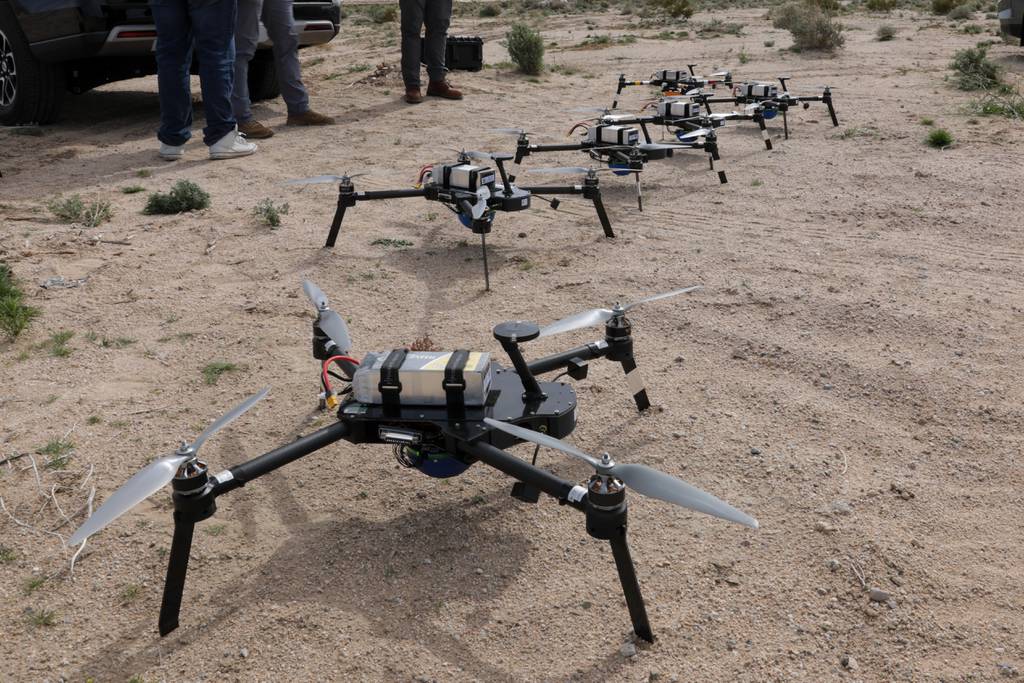A House committee’s proposal to create a drone corps within the Army may run counter to the service’s push to expand tactics, training and spending for unmanned aerial systems across some operational units, according to an Army official.
The House Armed Services Committee’s draft fiscal 2025 defense policy bill includes a provision directing the Army to establish a drone corps — essentially a branch to oversee all UAS and counter-drone programs. The branch would be responsible for integrating these systems across the Army; providing specialized training for units; and leading research, development test and evaluation efforts.
Under the provision, the drone corps would join the Army’s 17 specialty branches, which focus on areas like aviation, cyberspace, infantry and ordnance.
Gabe Camarillo, the undersecretary of the Army, said May 17 he understands lawmakers’ interest in honing the services’ focus on uncrewed systems due to their proliferation in conflicts in Ukraine and the Middle East. However, he added, creating a dedicated branch for this work is not the right approach — at least for now.
“Operating and defending against the drone threat is something that will be expected by all formations at multiple echelons,” he told reporters following an event with the Center for a New American Security think tank.
“Specializing a singular drone branch to get after the operations of these capabilities,” he added, “runs counter to what we have been focused on, which is ensuring that we are experimenting with different parts of different formations to understand how to best employ them.”
Not only would the proposal disrupt the Army’s strategy, Camarillo said, but he also doesn’t expect it would result in more resources for uncrewed systems, nor help the service buy drones at a faster rate.
“The institutional implications of it, to me, are secondary at this point as opposed to figuring out how we’re going to employ the technology, what technology works the best, and most importantly do we have our buying processes in place in order to be able to get there,” he said.
The service has spent about $1.8 billion in counter-drone capabilities since FY17, and Camarillo said he expects that to increase in the service’s FY26 budget request.
“As we’re putting together the ’26 budget, counter-UAS investment is definitely an area of focus for all of the Army leadership,” he noted. “Our goal is to make sure we have sufficient capabilities to be able to engage these threats, placing emphasis on the [research and development] side, maturing these technologies that will help us add more capabilities to the inventory and reduce the cost curve.”
The Army is also placing a greater emphasis on acquiring small, commercial drones, which weigh less than 55 pounds. The FY25 budget request includes $25 million for units to buy off-the-shelf systems validated by the Defense Innovation Unit’s Blue UAS program, designed to certify that commercial drones on order for military use are cybersecure and don’t include technology from Chinese suppliers.
DIU, which is a Pentagon technology hub, has approved 15 systems through the Blue UAS program since it began in 2020. The organization is also expanding the pool of drones available to military buyers.
Camarillo said that effort is an early step toward helping the Army buy commercial systems that meet requirements at a faster pace.
“We recognize that technology cycles are evolving very rapidly,” he said. “We’re looking to structure our ability to buy these capabilities in such a way that we can keep up with the pace of technological change.”
Courtney Albon is C4ISRNET’s space and emerging technology reporter. She has covered the U.S. military since 2012, with a focus on the Air Force and Space Force. She has reported on some of the Defense Department’s most significant acquisition, budget and policy challenges.








